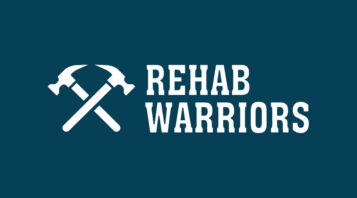As a homeowner, you can leverage your equity for a low-interest credit line with a HELOC—but you’ll need to pass lender qualifications to make it happen.
HELOCs have become more difficult to obtain since 2020, when market conditions and the subsequent rapid rise in interest rates made some banks leery of taking them on. Some lenders have tightened their qualifications and a few major banks, including JPMorgan Chase and Wells Fargo, are no longer accepting HELOC applications.
The good news is that there are still many lenders to choose from, but you may need to take steps before applying to improve your chances of securing the best rate and terms. Below we explore how to qualify for a HELOC and what alternatives are available to access the funds you need.
What Is a HELOC?
A HELOC is short for a home equity line of credit. How does a HELOC work, you may be wondering? A home equity line of credit is a pool of money you can draw from that’s secured by your property. Similar to a traditional credit card, it offers:
- A variable interest rate (there are fixed-rate HELOCs, but they’re rare)
- A credit line with a limit, or maximum you can borrow at one time
- The ability to borrow, repay, and borrow again as often as you like while the line is active
- The option of minimum interest-only payments while your credit is live
Unlike a regular credit card, a HELOC includes:
- A window of time to access your credit: the draw period, which is usually 5 to 10 years
- A preset repayment period for your ending balance plus interest, typically 10 or 20 years
- The risk of foreclosure if you don’t repay it
Importance of Home Equity in HELOCs
The amount of equity you own in your home determines the amount of HELOC credit you can qualify for from traditional lenders.
You can approach it through either an equity or loan ratio perspective:
- Equity ownership – Equity is calculated by subtracting what you owe on your property from its current market value and expressing it as a percentage of the value. For a HELOC application, you’ll include the HELOC limit as what you owe. For instance, if your home is valued at $250,000, you owe $100,000 on the mortgage, and you take out a $65,000 HELOC, your equity is $85,000, or 34%.
250,000 – (100,000 + 65,000) = 85,000
85,000 ÷ 250,000 = 0.34
- CLTV – Your combined loan-to-value ratio is determined by dividing your loan amount (mortgage plus HELOC) by property value, expressed as a percentage. For the example above, the CLTV ratio would be 66%.
(100,000 + 65,000) ÷ 250,000 = 0.66
You can find some options that allow larger loan slices, but most lenders require you to retain at least 15–20% in home equity, which means a maximum CLTV ratio of 80–85%.
If your equity is too low, you may receive a denied HELOC application because you don’t qualify due to HELOC minimums. Some lenders require you to borrow at least $10,000 to $35,000.
Requirements for a HELOC
While equity and home value are the factors that determine how much you can borrow, your financial history and current situation are how lenders decide whether you’re a good bet to repay a loan.
Credit Score Requirements
Credit scores range from 300 to 850—the higher the better—based on repayment history, debt utilization, and activities such as collections, foreclosures, and bankruptcies.
You’ll often see a simple statement such as “you need to have a credit score of X” to qualify for a HELOC. In reality, there’s more nuance to how your credit score fits in. Lenders each set their own minimum credit scores to qualify for each type of loan. For many lenders, HELOC minimums range from 620 to 700.
There are, however, lenders open to working with borrowers with lower credit. Although your choices will be fewer, it is possible to secure a HELOC with a score as low as 550. This blog has everything you need to know about getting a HELOC with bad credit.
Credit scores don’t just stop at a yes or no to your application, though. They play a role in what terms the lender will offer to you. A lower credit score may come with:
- A higher interest rate
- Additional or higher fees
- Stricter conditions for income, debt load, amount of equity, etc.
Debt-to-Income Ratio
Another factor in determining whether you’re able to repay the lender is your debt-to-income ratio, or DTI—in this instance, the lower, the better. Similar to credit scores, lenders will first judge DTI ratio against their yes/no standard and then weigh it against other requirements in crafting the offer.
Most lenders look for a maximum DTI ratio between 36% and 43%, with some going as high as 50%. On the higher end, you’ll need other factors to balance it out, such as a good credit score, more home equity, etc.
Proof of Income
You’ll need to provide proof of income that shows how much you make, that you are gainfully employed and likely to remain so (or equivalent factors for self-employment or business ownership). Documents may include:
- W-2 forms or pay stubs for employment over the past two years
- Tax returns for the past two years and current profit-and-loss statement for self-employment
- 1099 forms or award letters for disability, Social Security, or pension income
- Award letters, bank statements, or tax forms for retirement or investment distributions
- Bank statements, settlement, decree, or court order for alimony and child support
You may also be asked to supplement income documentation with proof of assets such as the past two months’:
- Bank account statements
- Investment and retirement account statements
Repayment History
In addition to a stable income, lenders look for a solid history of repayments, both on your mortgage and on other debts. Missed or late payments, or accounts in collections, are red flags that you may need to explain as part of your HELOC application.
Alternatives to a HELOC
Before you shop around for a HELOC lender, make sure you’ve asked yourself, “Is a HELOC a good idea for me?” Be sure to consider alternatives such as the following below.
Home Equity Loan
Like HELOCs, home equity loans typically come with a lower interest rate by using your property as security. However, they differ in that they:
- Provide a lump sum of cash immediately
- Offer fixed interest rates rather than variable
- Require an immediate start to principal-plus-interest monthly repayments
- Come with predictable, stable monthly payment amounts
If you can predict how much you want to borrow and don’t need the delay of a draw period, a home equity loan can be a more stable option to stay on track with repaying your loan amount.
Cash-Out Refinance
There are also a few differences between a HELOC vs cash-out refinance. With a cash-out refinance, you’ll take out a new primary mortgage plus borrow an additional chunk of cash secured by your home equity. Benefits include:
- A single monthly payment instead of multiple monthly debt payments
- Lower interest rate than a HELOC (though higher than traditional mortgages)
- The opportunity to shorten (or lengthen) your mortgage loan term
Personal Loan or Credit Card Line of Credit
HELOCs, home equity loans, and cash-out refinances are typically held up as better options than unsecured debt since they offer lower interest rates. Still, there are some circumstances where a personal loan or a credit card line of credit would work better for you.
Consider a personal loan or credit card if you:
- Are concerned about the risk of foreclosure
- Need access to funds less than standard $10,000 to $35,000 HELOC minimums
- Can qualify for a no-fee credit card with useful benefits
- Have alternative assets to use as security for a personal loan
- Are looking for a just-in-case line of credit
- Can pay off your credit card balance on a monthly basis
Sale-Leaseback: A Different Alternative
Access to cash without moving out of your home—if those are the two elements of a HELOC that appeal to you, a sale-leaseback (SLB) program may be a better fit. Instead of taking out another loan and hoping that the interest rate won’t keep skyrocketing when your repayment period begins, you could try the debt-free route.
With a sale-leaseback, you:
- Sell your home to an investor-landlord
- Convert your full equity to cash
- Gain the legal right to remain in your home as long as you wish as a renter
Instead of your current mortgage plus a new HELOC debt, your monthly housing budget will include:
- An agreed-upon rent with a multi-year lock
- No more homeowners insurance or property tax
- No cost or work for covered repairs and maintenance
Key Takeaways
You can secure a HELOC with a maximum CLTV ratio of 85%, a credit score of at least 620, a DTI ratio of 43% or less, plus a stable income and debt repayment history.
However, lenders each set their own qualifications, so if your numbers fall a bit above or below these, you may be approved for a HELOC with a higher interest rate, fees, or other requirements. The different factors can work to balance each other out—such as a poor-to-fair credit score offset by a low DTI ratio and a solid repayment history.
Before you commit to a HELOC, consider other equity debt alternatives, plus the debt-free option of a sale-leaseback.
Sources:
- PYMNTS. Wells Fargo Freezes New HELOCs As Mortgage Market Sputters. https://www.pymnts.com/loans/2020/wells-fargo-freezes-new-helocs/
- Chase. Get the money you need for your goals. https://www.chase.com/personal/home-equity/update
- Wells Fargo. New home equity lines of credit are currently unavailable. https://www.wellsfargo.com/equity/line-of-credit-details/
- Bankrate. Requirements for a home equity loan or HELOC in 2023. https://www.bankrate.com/home-equity/requirements-to-borrow-from-home-equity/
- Experian. What’s the Smallest Home Equity Loan or HELOC You Can Get? https://www.experian.com/blogs/ask-experian/smallest-amount-you-can-borrow-with-home-equity-loan-heloc/
- Credit.org. What’s a Good Credit Score? Credit Score Ranges Explained. https://credit.org/blog/what-is-a-good-credit-score-infographic/
- MoneyGeek. Getting a HELOC With Bad Credit. https://www.moneygeek.com/mortgage/heloc/bad-credit/
- LendEDU. What Documents Are Needed for a HELOC? https://lendedu.com/blog/heloc-documents/



















